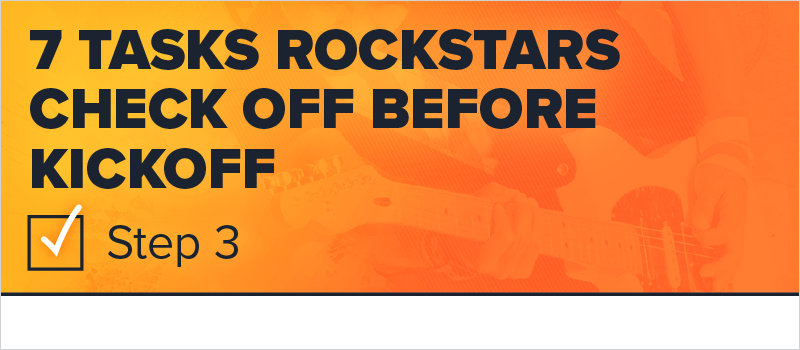
Welcome back to our project management series! In this series, we’re taking a deeper look at each step of the 7 Tasks Rockstars Check Off Before Kickoff.
Need a refresher on what we’re talking about? We talk about it in detail in this webinar. Essentially, we’ve developed a strategy we call the Readiness call that we use to gather information and get our custom eLearning development projects off to a good start.
During a Readiness call, we go over 7 specific areas with our clients, gathering information and details that will help us stay on target to meet our scoped budget and timeline.
Step 1 is to determine the roles and responsibilities of all the key players on your project.
Step 2 is about defining your client’s success criteria.
Today we’re talking about Step 3: Define Project Scope
You never want to find out, after you’ve built an hour-long desktop course for example, that your client thought it was also going to be responsive and viewable on phones and tablets.
That’s why Step 3: Define Project Scope is so important.
Make sure you’re all on the same page by clearly stating:
1. “This is what we are going to build/create for you.”
Examples:
“We’re going to build you a 30-minute Storyline course.”
“We’re going to build you 15 microlearning modules of 5-7 minutes each.
2. “These are the tools we are going to use to build it.”
Examples:
“We’re going to use dominKnow authoring tool, along with Camtasia for engaging videos.” “
We’re going to use Lectora because that’s what your in-house team uses and you’ll be able to edit it in the future if needed.”
3. “This is how we are going to QA it.”
Examples:
“What are you going to be viewing this course in? Google Chrome? Okay, we’ll check it in Google Chrome.”
(This is also your chance to enlighten the client that Internet Explorer is THE WORST.)
4. “This is how it will function when finished.”
Examples:
“You can open this right up on your desktop. There will be a test with ten questions at the end.”
5. “This is how it will NOT function when finished.”
Examples:
“This project is not scoped to be built for mobile, so it will only be viewable on a desktop.” “This project is not 508-compliant, so it may not work well for learners using screen readers.”
During Step 3: Define Project Scope, you should also make sure you’re all on the same page about animations, video style, etc.
You might say “video” and be thinking of a more illustrative, animated video and your client might be thinking of something more realistic, or even 360-degree, VR video. It’s important to know what your client is envisioning before you start production, or you’ll be wasting tons of hours—and money.
We’ll be talking about project phases on the next post, but until then, download the Top Strategies to Avoid a Change of Scope checklist to start implementing these techniques in your eLearning development.
Download the checklist to see all the steps rockstars check off before kickoff.







